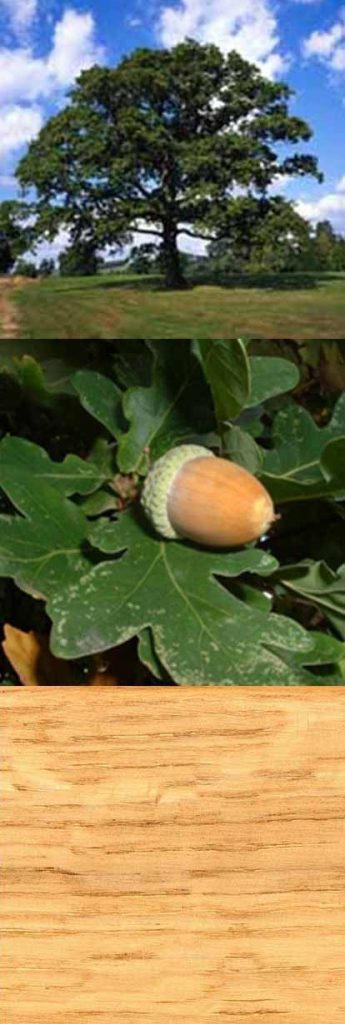A variety of different woods are used in our products and, on this page, we’ll be regularly profiling the trees from which they are sourced.
Why not tell us about your favourite tree? Simply complete our handy form and we may even use your comments on our site.
Profile: Oak

The Oak is undisputedly Britain’s greatest native woodland tree – a symbol of strength and longevity, the ‘king of trees’. It is slow growing achieving a girth of two metres and a height of 20 over 50 years, producing acorns after 40. The Common Oak (Quercus Robur) grows throughout Britain in lowland woods, hedgerows and fields. It is easily recognised by its distinct lobed leaves and acorns and has girth up to 70 feet with pollarded Oaks living up to 800 years. It is hugely important to wildlife – supporting a record 284 species of insects, more than any other plant. 30 species of bird and over 300 lichens are also associated with it.
The bark is used in tanning leather and as a timber, Oak’s versatility, hardness and durability are highly valued. A mature tree (the life expectancy can be 300 to 400 years) can yield 20 tons of timber. The honey coloured even grained wood is used for carving, turning and furniture making. The tannin makes Oak exceptionally durable for garden furniture. The medullary rays that are characteristic of Oak can be seen as clean straight lines across the end grain.
Oak that has been attacked by the beef-steak (Fistulina hepatica) fungus through an open wound is stained naturally by chemical changes and is sold as Brown Oak. The fungus does not harm the tree but only extracts enough nourishment for itself. When attacked by Peziza oeriginosa the wood is stained green.

